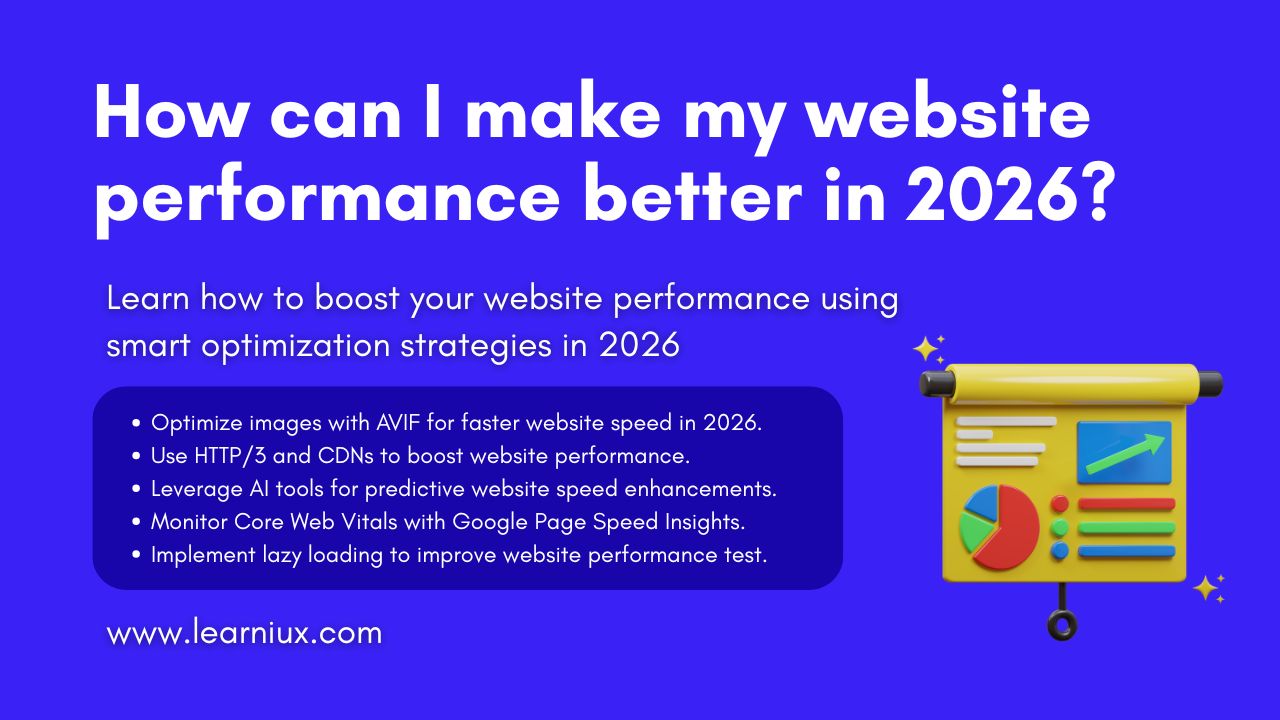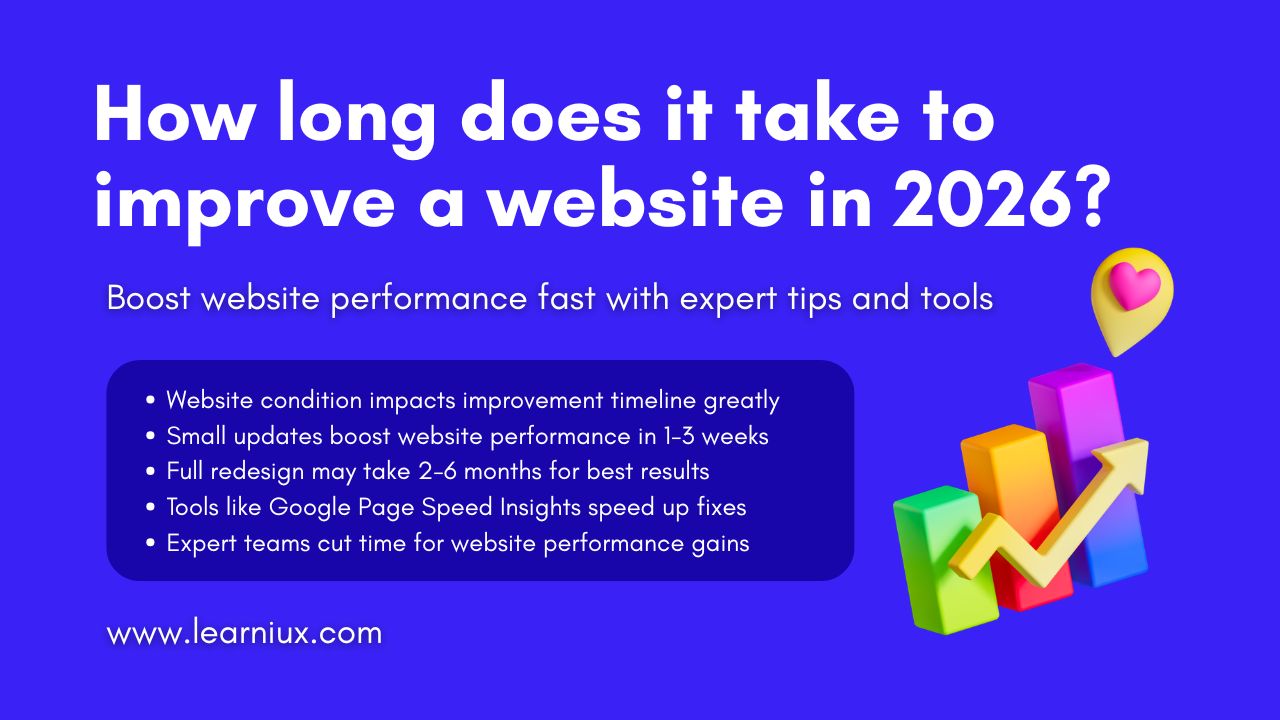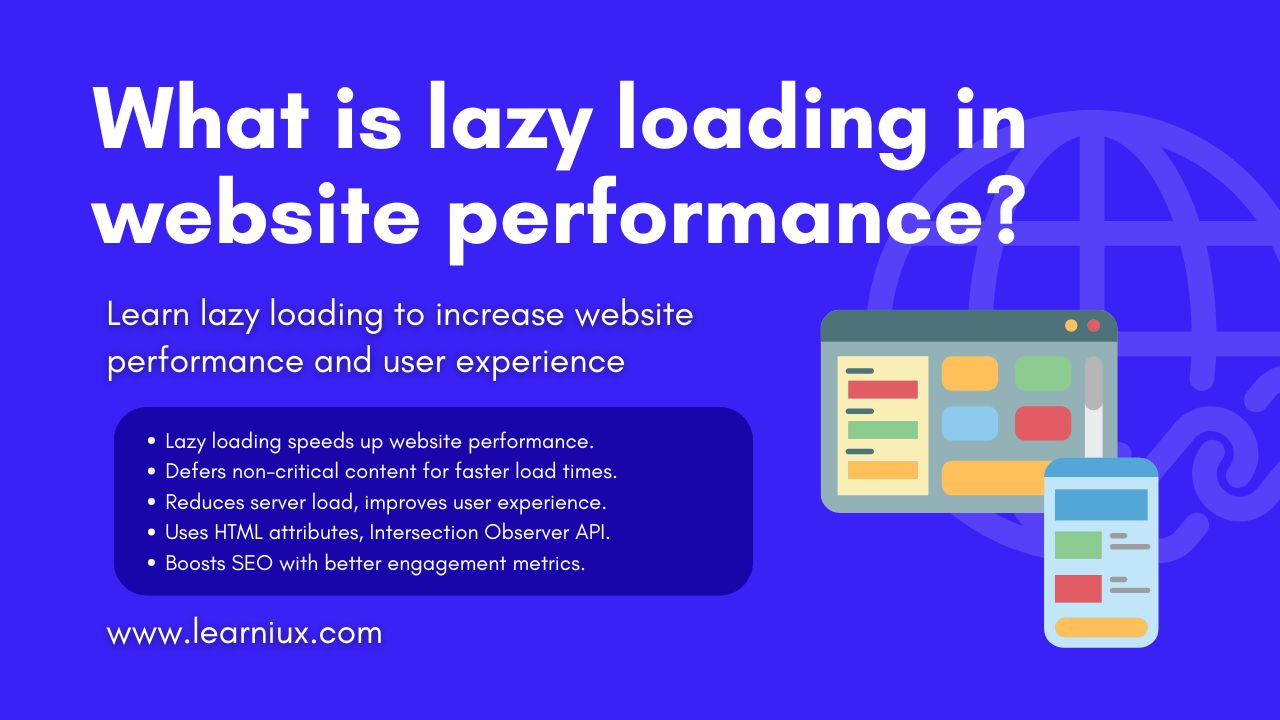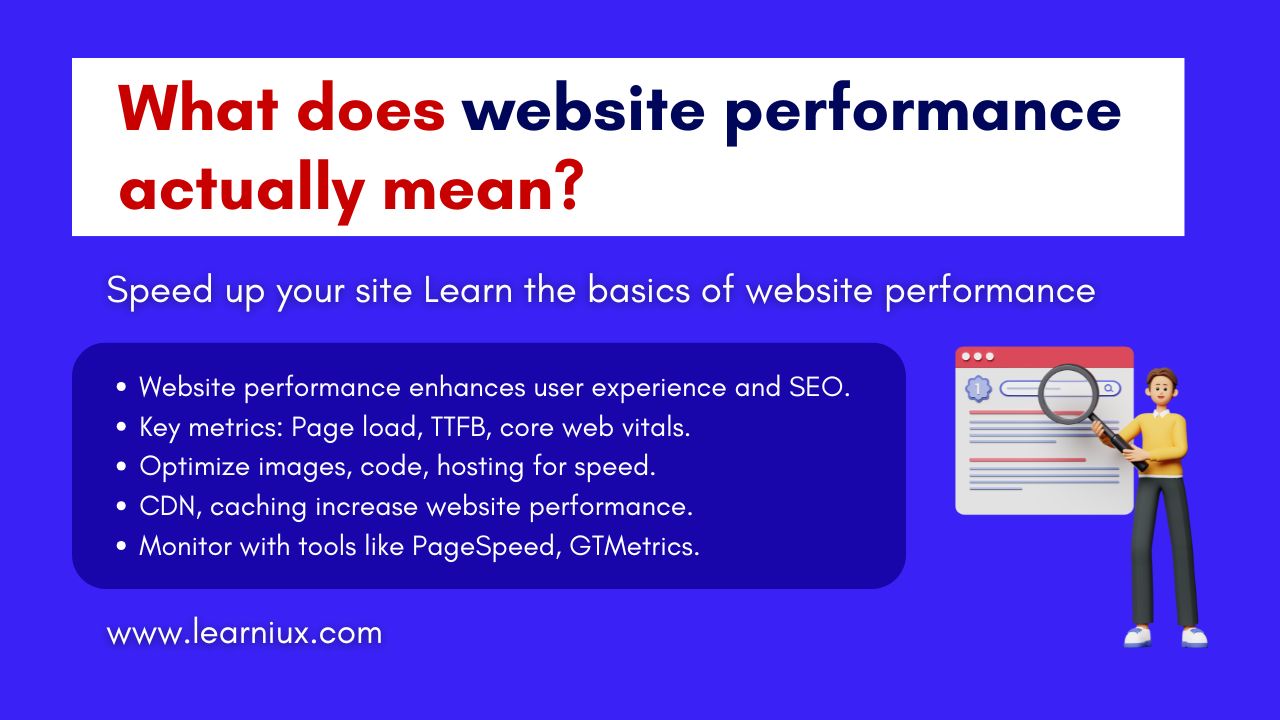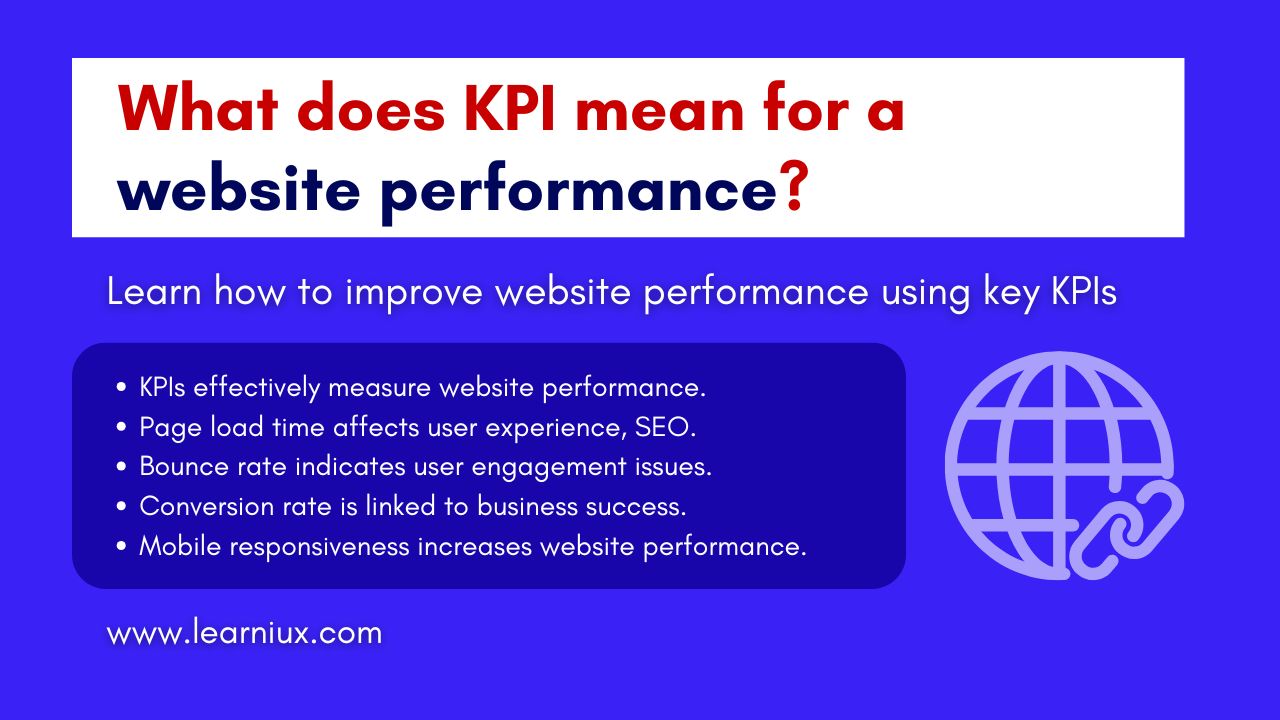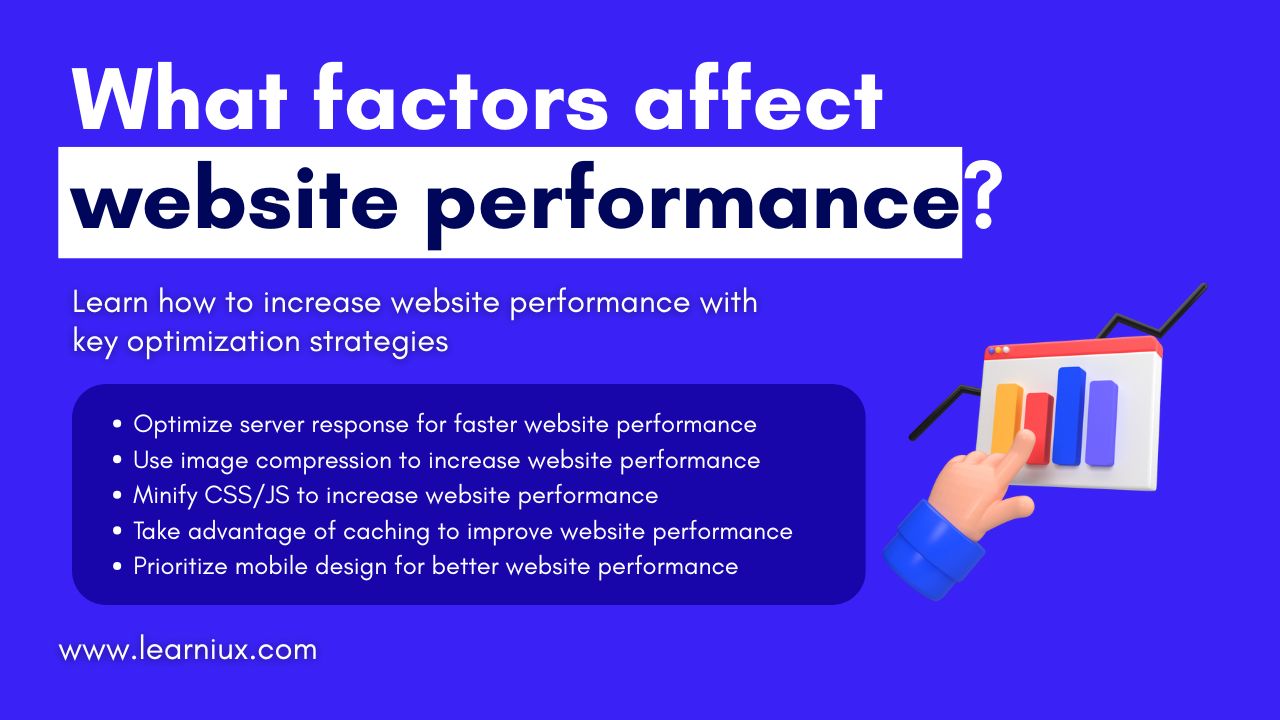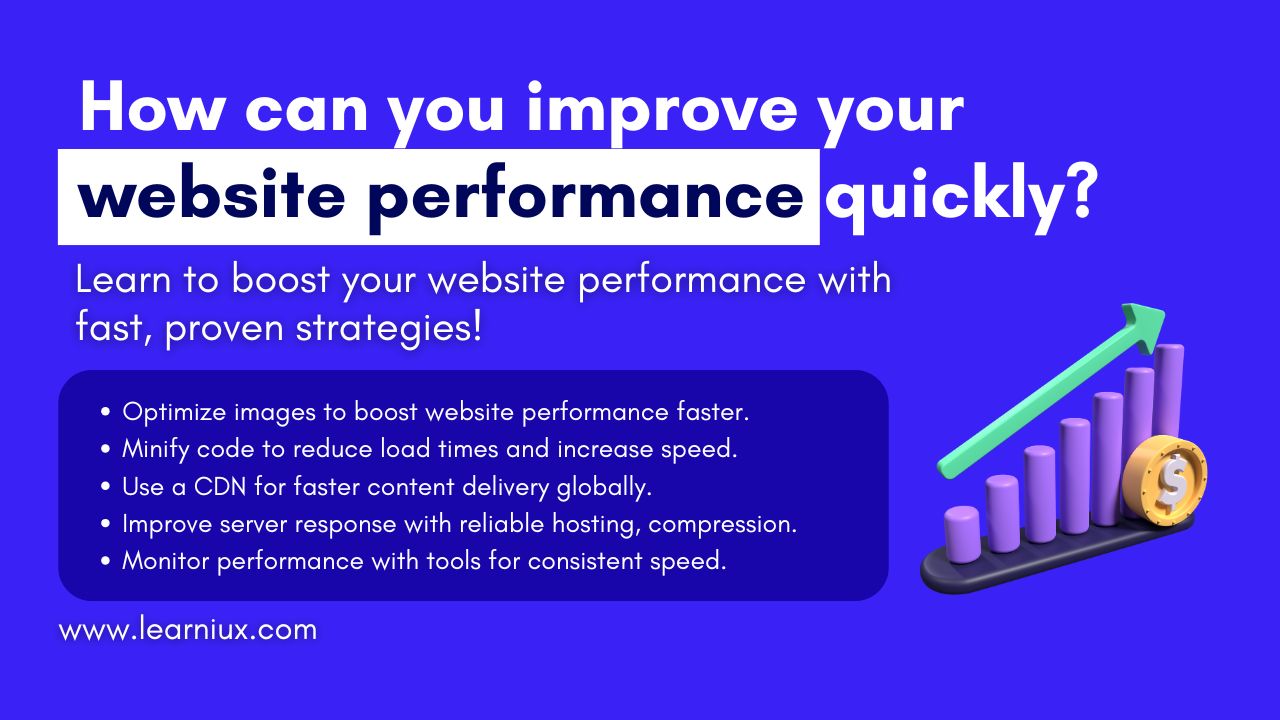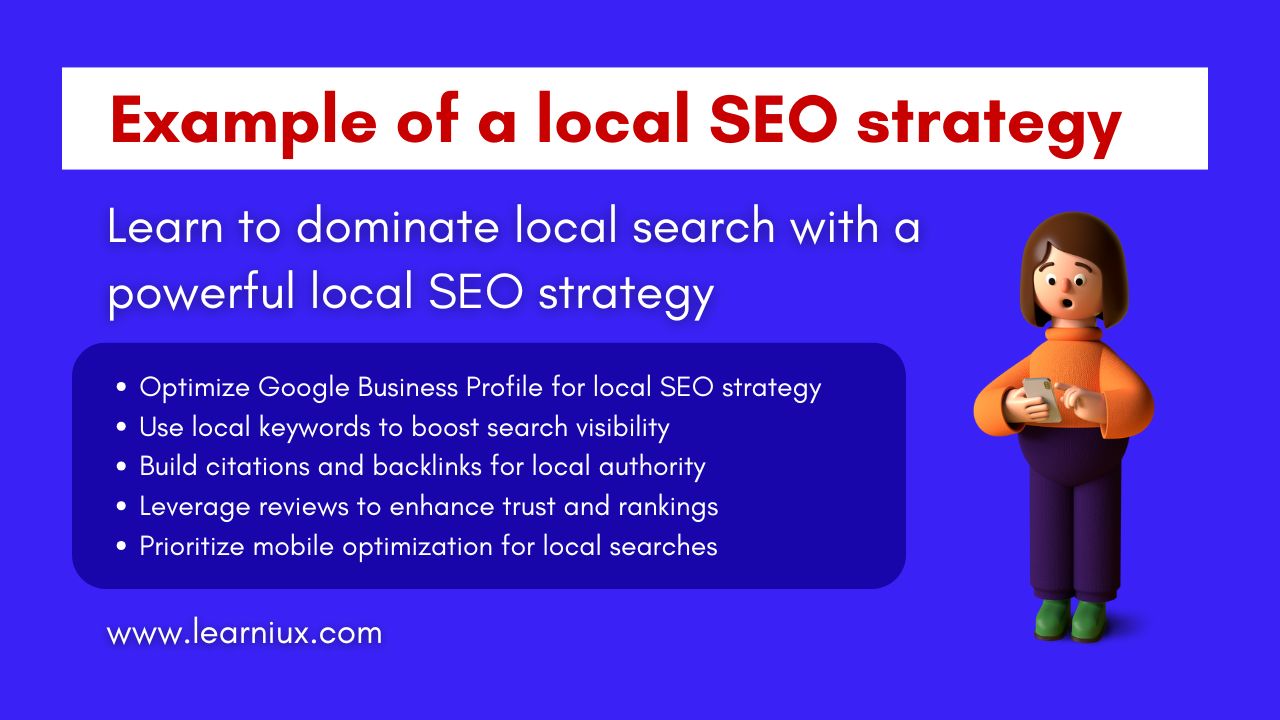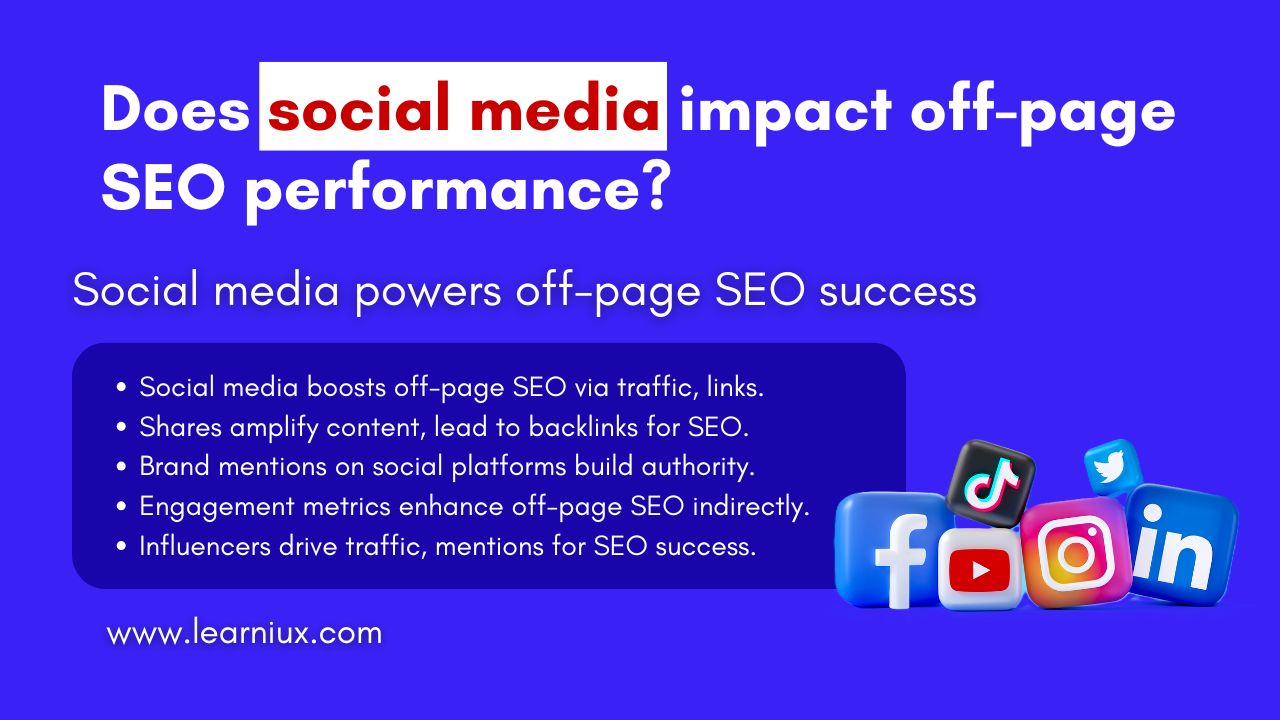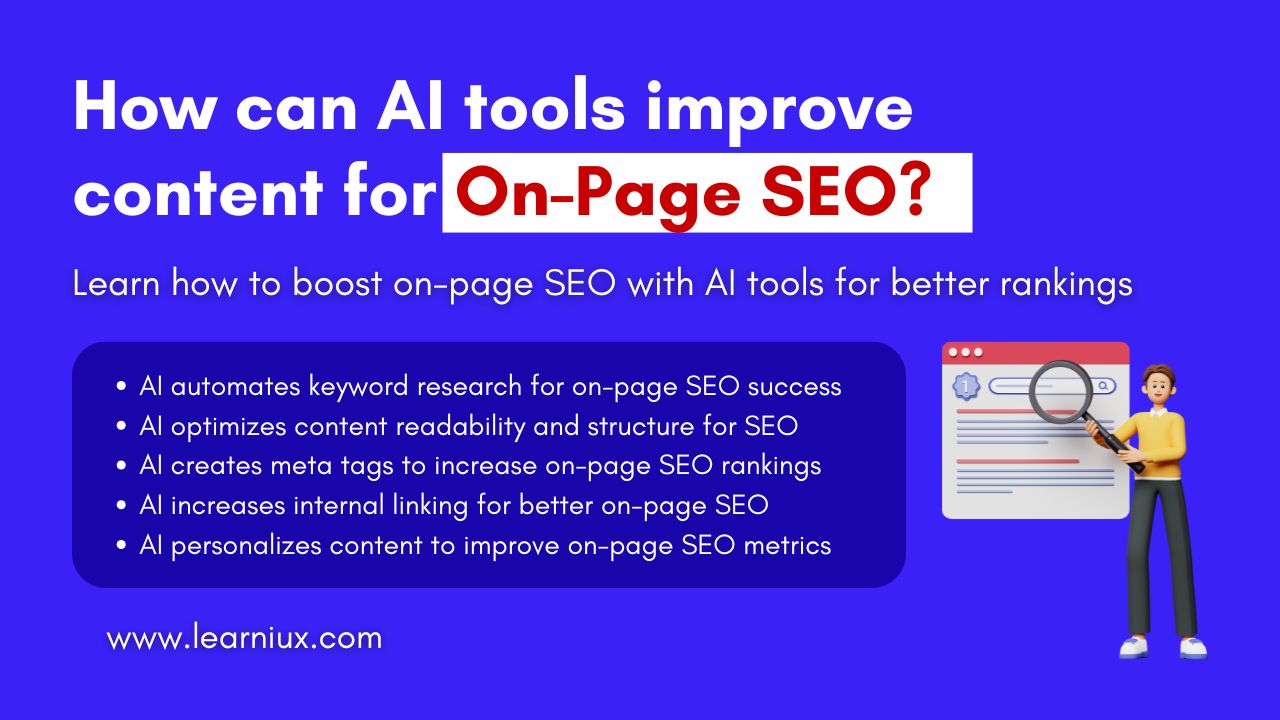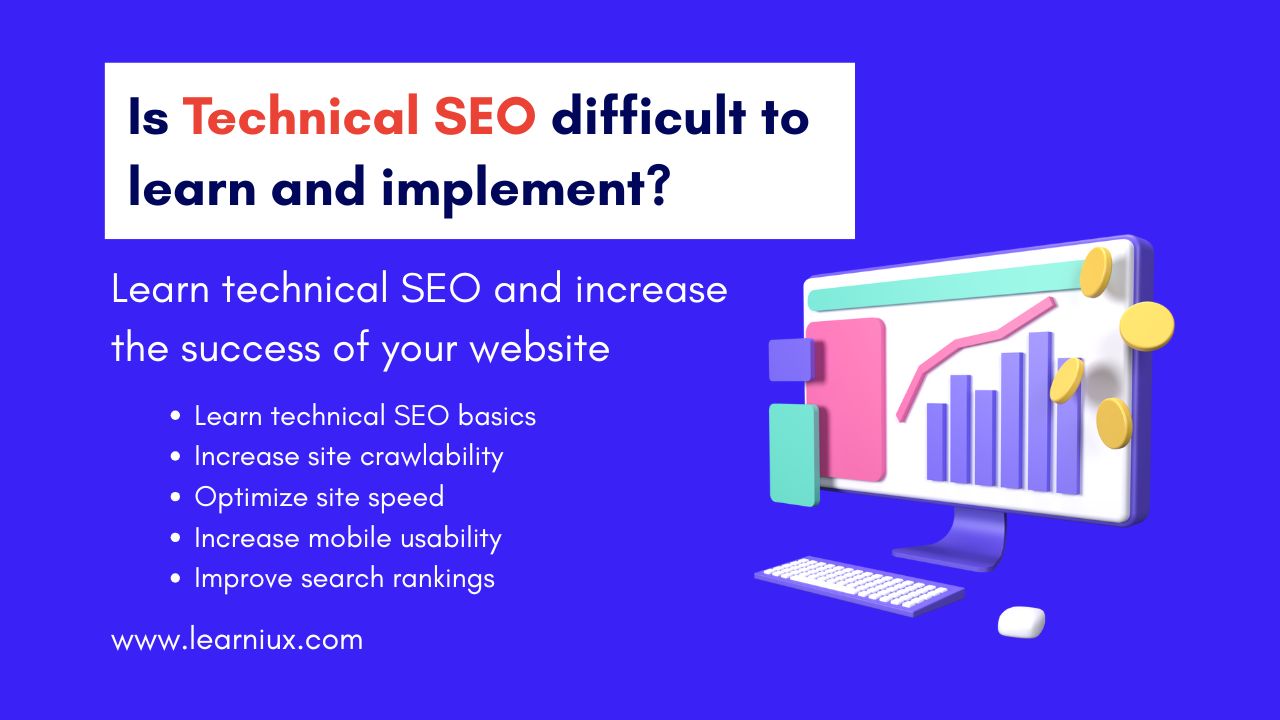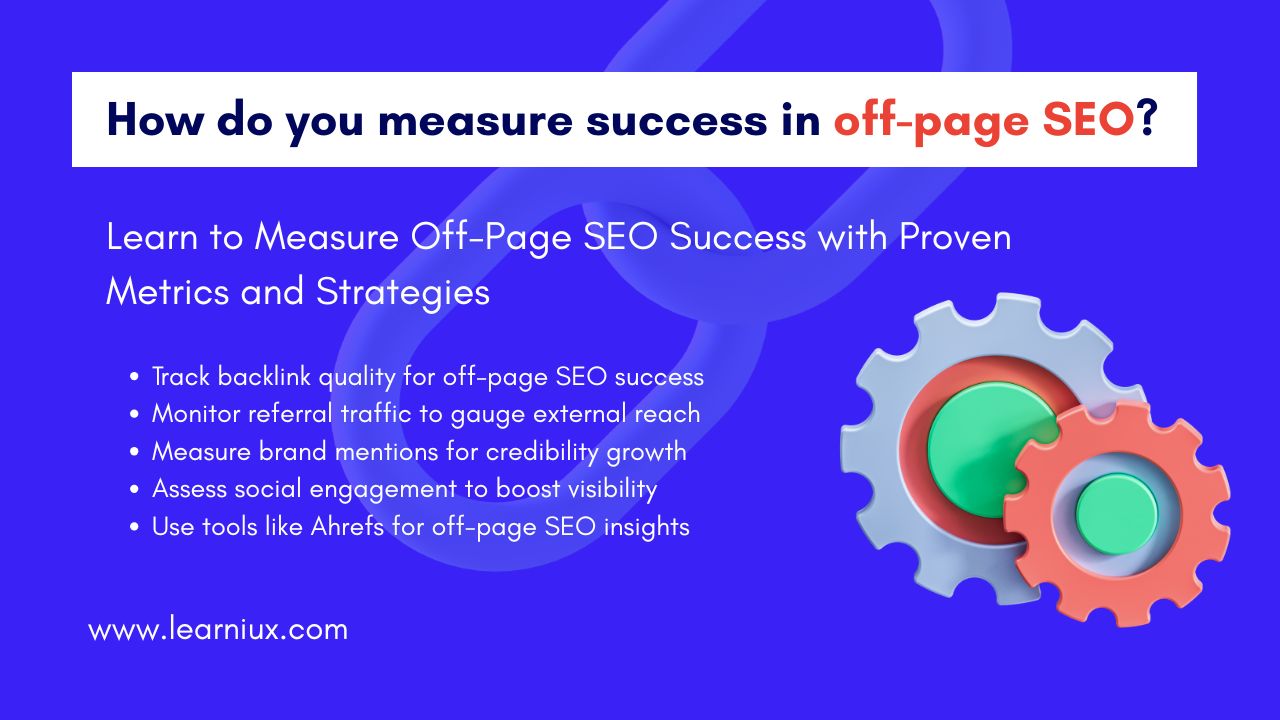In the rapidly evolving digital landscape of 2026, optimizing website performance is not just a technical necessity but a strategic advantage. As users demand faster, more responsive websites and search engines prioritize speed and user experience, improving website speed is critical to success. Recent advances from 2025 to 2026, including AI-powered tools, updated core web vitals, and sustainable design practices, have reshaped how website performance testing strategies should be approached. This comprehensive 2000-3000 word guide explores actionable steps to increase website speed, boost page performance test results, and ensure your site thrives in 2026. Using tools like Google Page Speed Insights, Pingdom Website Speed Tests, and other web speed testing platforms, you can achieve measurable improvements in site performance test results.
Understanding Website Performance in 2026
Website performance includes how quickly a site loads, how responsive it is to user interactions, and how stable its visual elements are. In 2026, the core web vitals, updated in 2025, remain central to assessing website speed. These metrics [Largest Contentful Paint (LCP), First Input Delay (FID), and Cumulative Layout Shift (CLS)] are important for assessing website performance and ensuring a consistent user experience. Poor website speed test results can lead to high bounce rates, low search engine rankings, and low user trust.
The 2025-2026 updates introduced AI-driven personalization and eco-friendly design principles, making website performance more dynamic. For example, Google Page Speed now integrates AI to predict user behavior, while sustainable coding reduces server load, which benefits both website performance test results and environmental impact. Tools like Google Page Speed Insights, Pingdom PageSpeed Test, and other website speed meter platforms are essential for conducting website speed tests and identifying areas for improvement.
Why Website Performance Matters in 2026
Slow website speeds frustrate users and hurt business results. According to 2025 statistics, a one-second delay in page speed can reduce conversions by up to 7%. In 2026, with voice search and mobile-first browsing dominating, it’s impossible to ensure a fast website speed report. Search engines like Google use Google Site Speed Test metrics to rank pages, meaning a poor website performance test can smother your site in search results. By using a website site checker or internet site checker regularly, you can stay ahead of performance issues.
Key Strategies to Improve Website Performance in 2026
To achieve top-notch website performance in 2026, adopt these updated strategies informed by the latest trends and tools like Google Page Speed Checker, Pingdom Website Speed, and website analytics online platforms.
Optimize Loading Speed for Better Website Performance
Loading speed is the cornerstone of website performance. Faster site speed test results can significantly improve user satisfaction and SEO rankings. Here’s how to optimize page speed in 2026:
- Compress media files: Use next-generation formats like AVIF, which were standardized in 2025 for images and videos. These formats reduce file sizes without sacrificing quality, improving website speed test results.
- Enable browser caching: Store static assets locally on users’ devices to reduce load times for returning visitors. This is a key factor in Google Page Speed Insights recommendations.
- Use Content Delivery Networks (CDNs): CDNs distribute your site’s assets across servers worldwide, reducing latency. Tools like Website Speed Meter can help you gauge the impact of CDNs on your site’s page speed test results.
- Implement lazy loading: Load images and videos only when they appear in the viewport. This technique, which was improved in 2026, can reduce initial page load times by up to 30%, as shown in Google Site Speed Report data.
- Minify code: Remove unnecessary characters from HTML, CSS, and JavaScript. Minification tools are highly recommended in Google Page Speed Analysis to improve web page performance test results.
Run website speed tests regularly using tools like Google Page Speed Checker or Pingdom PageSpeed Test to monitor improvements. Testing website page speed can reveal specific bottlenecks, such as unoptimized images or heavy scripts.
Leverage AI tools for improved website performance
AI is transforming website performance in 2026 by enabling predictive optimization and personalized user experiences. Here’s how to integrate AI for better website site speed:
- Predictive resource loading: AI tools analyze user behavior to preload critical resources, which reduces page speed test times. For example, Google Web Speed Test now includes AI-powered preloading for faster rendering.
- Personalized content delivery: Use machine learning to deliver optimized content, reducing data transfers. This improves website performance test results by reducing server strain.
- AI analytics for monitoring: Platforms like Website Inspection Site Tools now use AI to detect performance issues in real-time. These tools provide actionable insights to check website speed metrics.
By integrating AI, you can achieve a more responsive site, as confirmed by the Google Site Speed Test and Google Website Speed Test tools.
Adopt Sustainable Design for Long-Term Website Performance
A major trend for 2025 to 2026, sustainable web design aligns website performance with environmentally friendly practices. Here’s how to implement it:
- Use lightweight frameworks: Opt for frameworks like Astro or Svelte, which reduce JavaScript bloat. This reduces server load and improves website speed report metrics.
- Optimize code efficiency: Write clean, modular code to reduce energy consumption. This approach increases site performance test results and supports sustainability goals.
- Include dark mode: Dark mode reduces energy consumption on OLED screens, which improves website performance for mobile users. Tools like Web Site Checker can verify the results on page performance test scores.
Sustainable design not only increases website speed, but also aligns with the 2026 emphasis on environmental responsibility.
Integrate voice search and conversational interfaces
With the rise in voice search adoption in 2026, optimizing website performance for natural language queries is essential. Here’s how:
- Use schema markup: Structure content with schema to support conversational AI, improving website speed test results for voice queries.
- Optimize for natural language: Create content that matches how users speak, speed test websites for voice assistant compatibility.
- Reduce response times: Make sure your server can respond quickly to voice queries, as measured by Google Site Speed Checker.
These optimizations improve accessibility and test website performance metrics for various user interactions.
Focus on Core Web Vitals for Better Website Performance
Core Web Vitals, updated in 2025, are critical for website performance in 2026. Aim for:
- Largest Contentful Paint (LCP): Less than 2.5 seconds for main content loading.
- First Input Latency (FID): Less than 100 milliseconds for interaction.
- Cumulative Layout Shift (CLS): Less than 0.1 for visual consistency.
Use Google Page Speed Insights or Google Site Speed Test to audit these metrics. The Site Page Speed Test can identify areas that need improvement, such as slow server response times or unstable layouts.
Reduce third-party scripts for faster website speed
Third-party scripts, such as ads or analytics, can slow down website speed. In 2026, reduce their impact by:
- Asynchronous loading: Load scripts without blocking the main thread, as recommended by Google Page Speed Analysis.
- Audit script usage: Use website analytics online tools to identify and remove unnecessary scripts.
- Optimize tracking: Replace heavy analytics tools with lightweight alternatives to improve test website speed results.
Regularly check website speed meters or Pingdom website speed reports to ensure that scripts are not degrading website performance.
Boost mobile performance for 2026 trends
With mobile traffic dominating in 2026, optimizing website performance for mobile is of utmost importance. Focus on:
- Responsive design: Ensure your site adapts seamlessly to all screen sizes, check website speed improves Google scores.
- Accelerated Mobile Pages (AMP): Use AMP for content-heavy pages to boost page speed test results.
- Mobile-First Indexing: Align with Google’s mobile-first approach, as verified by Google Web Page Speed Insights.
Run mobile-specific website speed tests using Google Website Page Speed Test to ensure optimal performance.
Monitoring and Measuring Website Performance in 2026
Continuous monitoring is essential to maintaining website performance. Use these tools and strategies:
- Google Page Speed Insights: Provides a detailed Google Page Speed test report with core web vitals metrics.
- Pingdom Website Speed: Offers comprehensive website speed report data, ideal for tracking performance over time.
- Real-time analytics: Platforms like Website Checking Site Tools provide instant feedback on site performance.
- A/B testing: Test optimizations like lazy loading or CDN usage to measure their impact on website speed test results.
- Automated alerts: Set up alerts for performance drops using Monitor Website Tools to quickly resolve issues.
By running a test website or testing website page speed regularly, you can ensure your site remains competitive.
Advanced Tools for Website Performance Testing
In 2026, various tools can help you check website speed and improve website performance:
- Google Page Speed Insights: Provides actionable recommendations to improve page speed and core web vitals.
- Pingdom PageSpeed Test: Provides detailed website speed report data with load time breakdown.
- Website Checker: Tools like GTmetrix or Website Site Checker perform a comprehensive analysis of site performance test metrics.
- Best Internet Speed Test Websites: Platforms like Speedtest.net can complement net speed test website tools to match server performance to website speed.
- Google Site Speed Report: Use Google Web Page Speed Insights for an in-depth Google page speed analysis.
These tools help you check your website speed on Google and ensure consistent website performance test results.
Common pitfalls to avoid in 2026
When optimizing website performance, avoid these common mistakes:
- Ignoring mobile users: Failing to optimize for mobile can lead to poor web page performance scores.
- Overloading plugins: As flagged by Google Page Speed Checker, too many plugins can slow down a website.
- Neglecting regular audits: If website performance is not consistently checked, issues like broken links or slow scripts can arise.
- Poor hosting options: A low-quality host can interfere with internet site speed test results. Choose a provider that is optimized for website performance speed testing.
Future-Proof Your Website Performance
To stay ahead in 2026, anticipate emerging trends:
- Edge Computing: Perform processing closer to users to reduce latency, improving test webpage speed.
- WebAssembly: Use WebAssembly for high-performance applications, boosting web page performance test results.
- AI-Driven SEO: Adapt to E-E-A-T principles to ensure website performance supports search rankings.
By adopting these forward-thinking strategies, you can maintain high website speed test scores and stay competitive.
Conclusion
Improving website performance in 2026 requires a multi-pronged approach, including speed optimization, AI tools, sustainable design, and ongoing monitoring. Using tools like Google Page Speed Insights, Pingdom Website Speed, and online website analytics platforms, you can achieve faster website speeds, better page performance test results, and higher user satisfaction. To ensure your site thrives in the competitive digital landscape, regularly check website speed, focus on core web vitals, and stay up to date with 2025-2026 trends. With these strategies, your website performance test will reflect a fast, efficient, and user-friendly site that is ready for the demands of 2026.
FAQs
What is Website Performance and Why Does It Matter in 2026?
Website performance refers to how quickly and efficiently a website loads and responds to user interactions. In 2026, user expectations are driven by instant access, and search engines like Google prioritize speed through updated core web vitals. Poor performance leads to high bounce rates, low conversions, and low SEO rankings. Tools like Google Page Speed Insights are essential for measuring metrics like Largest Contentful Paint and First Input Delay. The 2025-2026 advancements emphasize AI-driven optimization, making performance a key differentiator. Sustainable design trends also combine performance with eco-friendly practices, reducing server load. Regular testing with a website speed test ensures that your site meets 2026 standards. By focusing on performance, businesses can increase user satisfaction and stay competitive. Monitoring your website with a website checker helps identify and resolve issues quickly. Ultimately, website performance drives both user experience and business success in 2026.
How can I test my website speed in 2026?
Testing website speed in 2026 involves using advanced tools like Google Page Speed Insights, Pingdom Website Speed, and GTmetrix. These platforms provide detailed website speed reports, analyzing metrics like page load time and core web vitals. Start by running a test website speed test to measure largest contentful paint, first input delay, and cumulative layout shift. In 2026, AI-powered tools provide real-time insight into performance bottlenecks like unoptimized images or heavy scripts. A net speed test can also check the performance of a website server, making sure it’s aligned with your site’s needs. Regular testing with a website speed meter helps track improvements over time. Use Google Site Speed Test for SEO-focused recommendations tailored to 2026 trends. Mobile-specific tests are important, as mobile-first indexing dominates. Consistent monitoring ensures that your site remains fast and competitive in the digital landscape of 2026.
What role will AI play in improving website performance in 2026?
AI will play a transformative role in increasing website performance by enabling predictive and personalized optimization in 2026. Machine learning algorithms analyze user behavior to reduce page speed test times and preload critical resources. AI-powered analytics, available in tools like Website Checking Site Platform, will identify performance issues in real-time. In 2026, AI personalizes content delivery, reduces data transfers, and enhances website performance test results. For example, AI overviews in search engines, refined since 2025, optimize resource loading for faster navigation. These tools also support voice search optimization, aligning with the conversational interface trend of 2026. By integrating AI, websites achieve faster load times and better user engagement. Regular use of the Google Web Speed Test can validate AI-driven improvements. Overall, AI is a cornerstone for achieving high-level website performance in 2026.
How do core web vitals affect website performance in 2026?
Updated in 2025, the core web vitals are critical to website performance in 2026, measuring user experience through three key metrics: Largest Contentful Paint, First Input Delay, and Cumulative Layout Shift. These metrics assess loading speed, interactivity, and visual consistency, which directly impact SEO rankings. A poor score in the Site Performance Test can reduce your site’s visibility on search engines like Google. In 2026, optimal performance requires achieving LCPs of less than 2.5 seconds, FIDs of less than 100ms, and CLSs of less than 0.1. Tools like Google Page Speed Insights provide actionable insights to improve these metrics. Regular audits, including website speed tests, ensure compliance with the 2026 standards. Mobile optimization is especially important, as mobile-first indexing dominates. Failure to meet core web vitals can lead to increased bounce rates and eroded user trust. Prioritizing these metrics will ensure your site excels in the competitive environment of 2026.
What are the best tools to monitor website performance in 2026?
In 2026, the top tools to monitor website performance include Google Page Speed Insights, Pingdom Website Speed, and GTMetrics. Google Page Speed Checker provides detailed reports on core web vitals and SEO recommendations. Pingdom PageSpeed Test provides comprehensive website speed reports, breaking down load times and resource usage. GTMetrics, a robust website checker, analyzes site page speed test results for both desktop and mobile. AI-powered platforms in 2026 offer real-time monitoring, which instantly alerts you to performance dips. Website Speed Meter tracks improvements over time, while Net Speed Test ensures website server reliability. Tools like Google Site Speed Report integrate with AI trends in 2026 for predictive analysis. Regular use of these tools helps maintain high website performance. Combining them ensures a holistic approach to monitoring and optimization in 2026.
How does sustainable design improve website performance in 2026?
Sustainable design in 2026 increases website performance by reducing server load and energy consumption. Lightweight frameworks like Astro or Svelte reduce JavaScript bloat, improving page speed test results. Clean, modular code reduces processing demands, increasing website performance test scores. Dark mode, a trend for 2026, reduces energy consumption on OLED screens, increasing mobile website speed. Sustainable practices are matched with eco-friendly hosting, which optimizes server response times for better Google Site Speed Test results. By reducing resource-heavy elements, sustainable design checks improve website speed metrics. Tools like Website Site Checker verify the impact of these optimizations. In 2026, sustainability also increases user trust, as eco-conscious practices are popular with audiences. Regular testing with website performance tests ensures sustainable improvements. Adopting sustainable design is a win-win for performance and environmental impact.
Why is mobile optimization important for website performance in 2026?
Mobile optimization is important for website performance in 2026 due to the dominance of mobile-first indexing and user behavior. The majority of users access sites via mobile devices, making fast mobile page speed essential. Tools like the Google Website Page Speed Test highlight mobile-specific issues, such as slow rendering or responsive elements. Optimizing images with AVIF and implementing lazy loading improves mobile test webpage speed results. Responsive design ensures seamless performance across all devices, increasing the Check Website Performance Score. In 2026, Accelerated Mobile Pages (AMP) remains effective for content-heavy sites, reducing load times. Poor mobile website speed testing can hurt SEO rankings and user retention. Regular audits with Google Page Speed Insights ensure mobile compliance. Prioritizing mobile optimization aligns with user and search engine expectations in 2026, delivering better results.
How can voice search optimization improve website performance in 2026?
Voice search optimization in 2026 will improve website performance by meeting the growing use of conversational AI. Content structuring with schema markup supports natural language queries, improving website speed test results for voice interactions. Fast server responses, which are important for voice search, increase Google Site Speed Checker scores. Natural language optimization aligns content with how users speak, increasing user engagement. In 2026, voice search will drive significant traffic, making it a key factor in website speed. Tools like Website for Speed Test verify voice search performance. AI-powered tools refine content delivery for voice queries, reducing latency. Regular testing with website performance tests ensures consistency. By prioritizing voice search, you improve accessibility and overall website performance in the 2026 digital landscape.
What are the common mistakes to avoid when optimizing website performance in 2026?
Common mistakes in 2026 include neglecting mobile optimization, overloading with plugins, and neglecting regular audits. Failure to optimize for mobile leads to a lack of web page performance testing, as mobile-first indexing dominates. Too many plugins slow down website speed, as flagged by Google Page Speed Checker. Not testing your website regularly creates issues like broken links or heavy scripts. Poor hosting choices can hinder website speed test results, so choose providers that are optimized for speed. Excessive use of third-party scripts hurts the speed test website results. Ignoring core web vitals leads to poor Google Site Speed Report scores. In 2026, ignoring AI-powered tools limits personalization and performance. Regular monitoring with a website site checker avoids these issues. Avoiding these mistakes ensures consistent, high website performance.
How can I future-proof my website performance in 2026 and beyond?
Future-proofing website performance in 2026 is adopting emerging technologies like edge computing and web assembly. Edge computing reduces latency by processing data closer to users, improving test webpage speed. Web assembly enables high-performance applications, boosting web page performance test results. Staying up-to-date with AI-driven SEO with E-E-A-T principles ensures strong rankings. Regular testing with Google Page Speed Insights and Pingdom Website Speed keeps your site aligned with 2026 trends. Optimization for voice search and mobile-first indexing prepares your site for evolving user behaviors. Sustainable design practices increase efficiency and user trust. Monitoring with a website speed meter ensures continuous improvement. By integrating these strategies, your site will maintain high-level website performance in 2026 and beyond, remaining competitive in the digital landscape.
How will server response time affect website performance in 2026?
Server response time will significantly impact website performance in 2026, as it determines how quickly a site starts loading for users. Slow servers can increase page speed test times, leading to higher bounce rates and lower SEO rankings. In 2026, with mobile-first indexing and AI-driven user expectations, servers must deliver content in less than 200 milliseconds for optimal website speed. Choosing a high-quality hosting provider that is optimized for speed checking website standards is of utmost importance. Tools like Google Page Speed Insights measure server response time as part of their core web vitals analysis. Upgrading to edge computing, a trend for 2026, reduces latency by processing data closer to users. Running a Net Speed Test website regularly ensures that your server is meeting website performance test goals. Slow responses can also affect voice search performance, which is important in 2026. Monitoring your website with Site Checker helps you quickly identify and resolve server issues. Fast server response times are the foundation for optimal website speed in 2026.
What is the role of content delivery networks in improving website performance in 2026?
Content delivery networks (CDNs) are important in improving website performance in 2026 by delivering content to servers around the world. By serving assets from locations closer to users, CDNs reduce latency and improve website speed test results. In 2026, CDNs integrate with AI to predict user demand, preloading resources for faster page speeds. Tools like Google Site Speed Test show significant improvements in the largest contentful pages when using CDNs. They also handle traffic spikes, ensuring consistent website performance test results during peak times. CDNs support sustainable design by optimizing data delivery, reducing server load. Regularly checking website speed report data confirms CDN effectiveness. For mobile users, CDNs are crucial for faster site page speed test performance. Implementing a CDN is a proven strategy to increase check website speed metrics in the competitive landscape of 2026.
How can lazy loading improve website performance in 2026?
Lazy loading improves website performance in 2026 by deferring the loading of non-critical resources such as images and videos until they are needed. This reduces initial page load times, improves website speed test scores, and improves user satisfaction. In 2026, lazy loading is refined with AI to prioritize content based on user behavior, optimizing page performance test results. This is especially effective for mobile devices, where bandwidth is limited, as shown in the Google Website Speed Test Report. Lazy loading also supports sustainable design by reducing energy consumption, in line with 2026 trends. Tools like Pingdom PageSpeed Test can measure its impact on site speed test metrics. Properly implementing lazy loading can prevent layout shifts, maintaining a cumulative layout shift score. Regular audits with a website speed meter ensure optimal performance. Lazy loading is a key tactic for achieving fast website site speed in 2026.
Why is image optimization important for website performance in 2026?
Image optimization is important for website performance in 2026, as images often make up the largest portion of page data. Using next-gen formats like AVIF, which was standardized in 2025, reduces file size without sacrificing quality, improving page speed test results. Optimized images improve Largest Contentful Paint, a key core web vitals metric as measured by Google Page Speed Insights. In 2026, AI tools automatically compress and resize images based on device type, which increases website speed. Lazy loading complements optimization by loading images only when viewed, which reduces website performance test times. Unoptimized images can lower site page speed test scores, especially on mobile. Regular checks with a website checker ensure that images are not degrading performance. In 2026, sustainable design principles emphasize lightweight assets for efficiency. Image optimization is essential for fast website speed results and better user experiences.
How will JavaScript optimization affect website performance in 2026?
JavaScript optimization is important for website performance in 2026, as heavy scripts can significantly slow down page speed. Minifying and deferring JavaScript reduces processing time, improving website speed test results. In 2026, lightweight frameworks like Svelte reduce bloat, increasing page performance test scores. As seen in Google Site Speed Report data, AI-powered tools optimize script execution by prioritizing critical functions. Asynchronous loading prevents scripts from blocking page rendering, which is a key factor in Google Page Speed Analysis. Overuse of third-party scripts can hurt test website speed test results, so regular audits are essential. Tools like Pingdom Website Speed identify problematic scripts for removal. Sustainable coding practices in 2026 emphasize efficient JavaScript for less server load. JavaScript optimization ensures faster website performance checks and seamless user interactions in 2026.
What are the benefits of browser caching for website performance in 2026?
Browser caching in 2026 increases website performance by storing static assets like images and CSS locally on users’ devices. This reduces server requests for returning visitors, resulting in faster page speed test results. In 2026, advanced caching strategies use AI to predict which assets to cache, optimizing website speed. Tools like Google Page Speed Checker recommend caching to improve core web vitals metrics. Effective caching reduces bandwidth usage, supporting sustainable design trends in 2026. This is especially effective for mobile users, as shown in the website speed report data. Regular checks with Website Checker ensure that caching is configured correctly. Poor caching can cause unnecessary data transfers, slowing down site performance test scores. Implementing browser caching is a simple yet powerful way to increase your website speed in 2026.
How can I optimize my website for voice search in 2026?
Optimizing for voice search in 2026 increases website performance by keeping up with the growing use of conversational AI. Use schema markup to structure content for natural language queries, improve website speed test results. Fast server responses, which are important for voice interaction, increase Google Site Speed Checker scores. Create content with conversational keywords, as users speak differently than they type, increase website speed test consistency. In 2026, AI tools analyze voice query patterns to optimize content delivery, which reduces page speed test times. Regular testing with website performance tests ensures voice search readiness. Mobile optimization is key, as most voice searches occur on mobile devices. Tools like Google Page Speed Insights validate performance for voice users. Voice search optimization improves accessibility and website speed testing in 2026.
How does hosting quality affect website performance in 2026?
Hosting quality directly affects website performance in 2026 by influencing server response times and reliability. High-quality hosting ensures fast page speed test results, which are important for core web vitals and SEO rankings. In 2026, hosting providers with edge computing capabilities reduce latency, improving website speed test results. Poor hosting can lead to downtime or slow site page speed test scores, which frustrates users. Tools like the Net Speed Test website measure server performance to ensure alignment with website performance testing goals. Sustainable hosting options in 2026 will help minimize energy consumption by supporting eco-friendly design. Monitor hosting regularly with a website speed meter to detect issues. It is essential to choose a provider that is optimized for speed checking website standards. High-quality hosting ensures consistently stable website performance in the competitive landscape of 2026.
How will third-party scripts affect website performance in 2026?
Third-party scripts, such as ads or analytics, can degrade website performance in 2026 by increasing page load times. These scripts often block rendering, which negatively impacts page speed test scores. In 2026, asynchronous loading reduces their impact, as recommended by Google Page Speed Insights. Auditing scripts with Website Checker identifies unnecessary scripts to remove, which improves website speed. Lightweight alternatives to heavy analytics tools increase test website speed results. AI-driven optimization in 2026 prioritizes critical scripts, which reduces latency. As shown in Google Site Speed Report data, overuse of third-party scripts can harm core web vitals. Regular checks with Pingdom Website Speed ensure that scripts are not compromising performance. Reducing third-party scripts is key to achieving faster website speed in 2026.
How Can A/B Testing Improve Website Performance in 2026?
A/B testing improves website performance by allowing you to compare different versions of a page to identify the fastest and most effective design. By testing factors like image formats or script placement, you can optimize page speed test results. In 2026, AI-powered A/B testing tools analyze user interactions to suggest performance improvements, which in turn improves website speed report results. For example, testing lazy loading versus preloading can improve the largest contentful paint scores. Tools like Google Page Speed Checker validate the impact of tested changes. A/B testing also ensures mobile responsiveness, which is critical to site performance testing success. Regular testing with a website speed meter tracks incremental gains. This data-driven approach reduces guesswork, ensuring optimal testing website performance. A/B testing is a powerful strategy for maintaining high website speed in 2026.





















